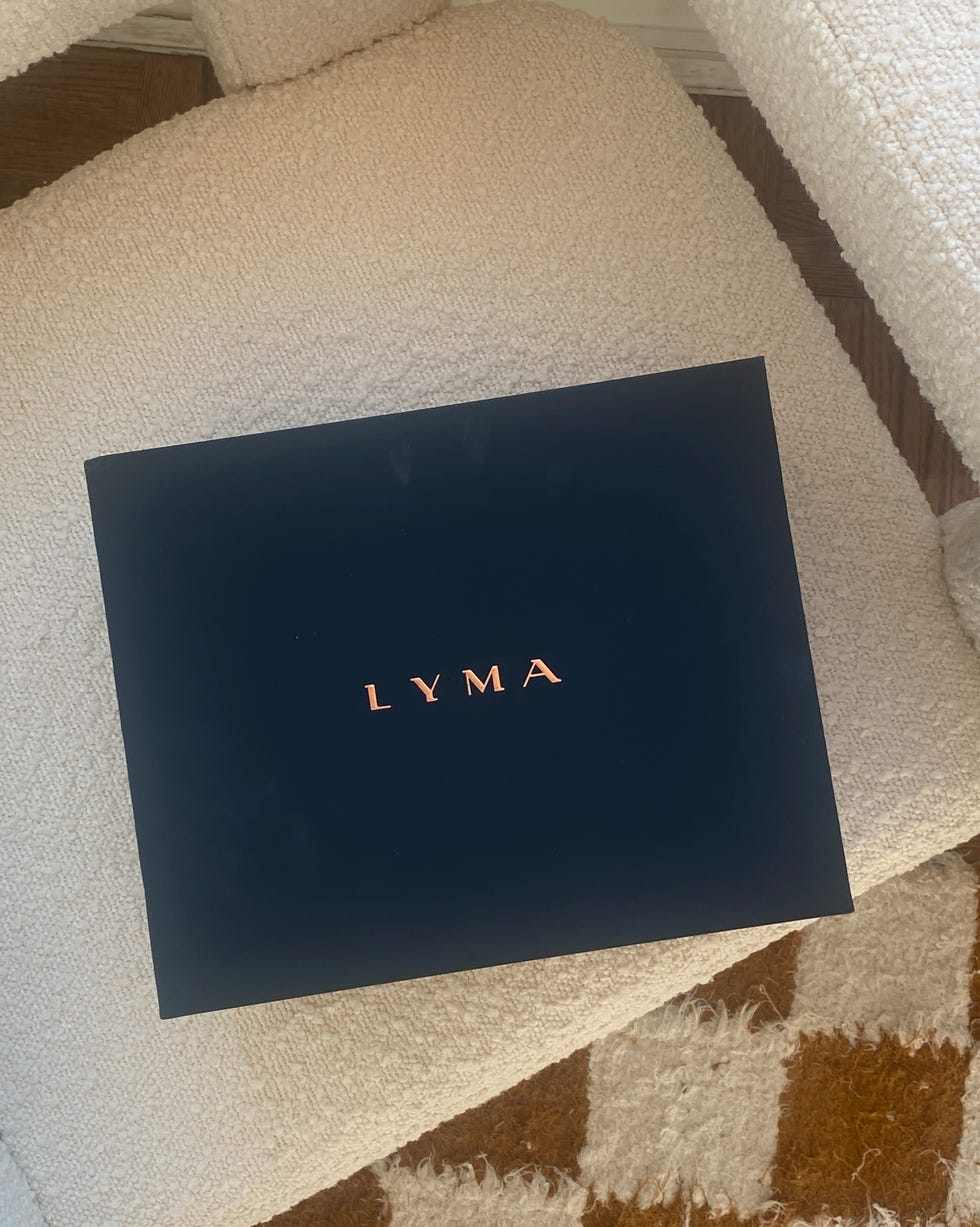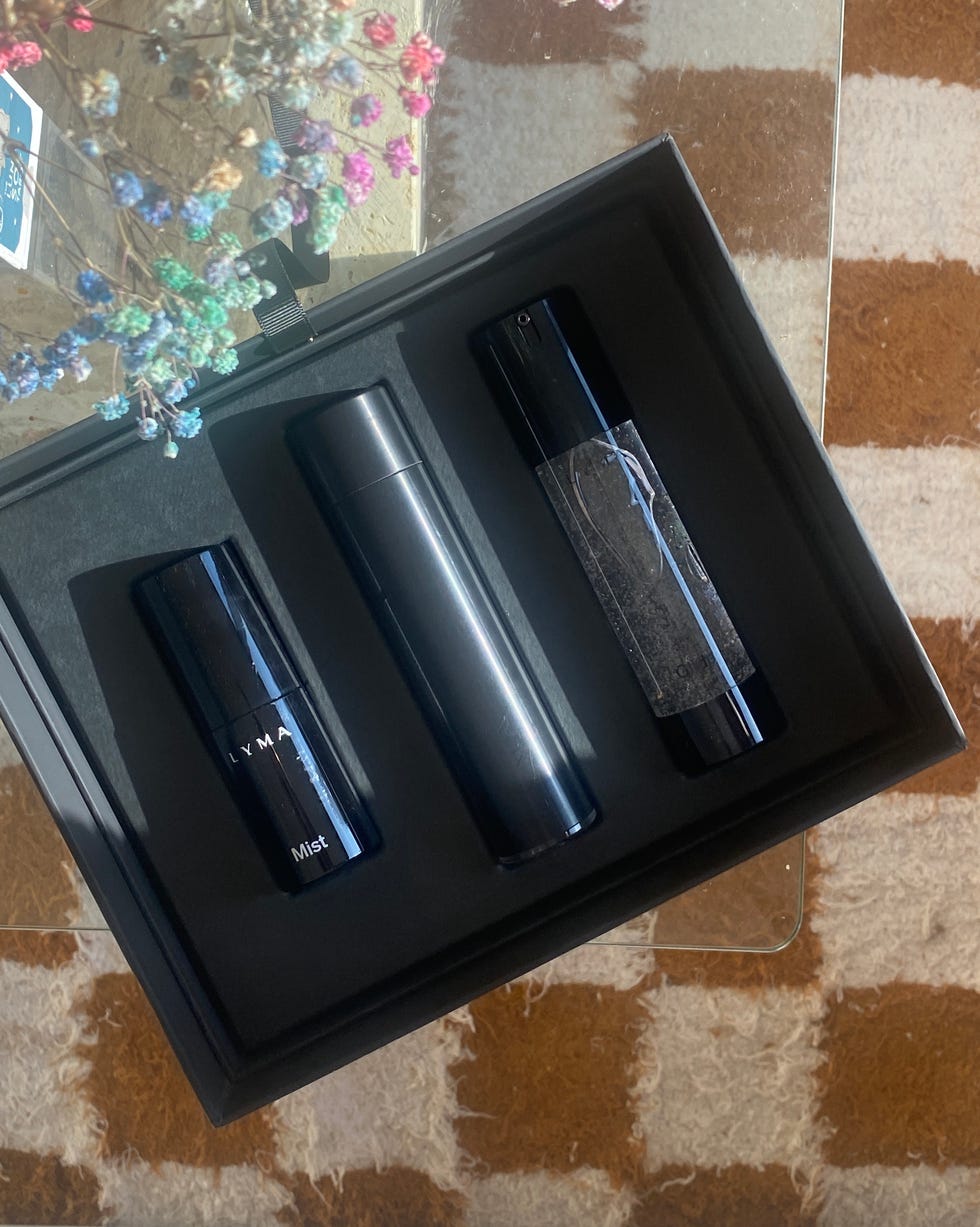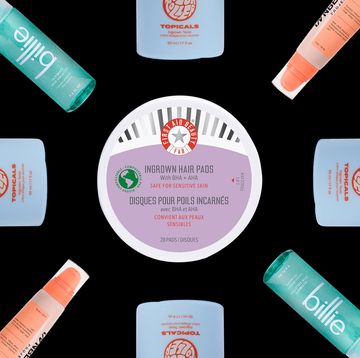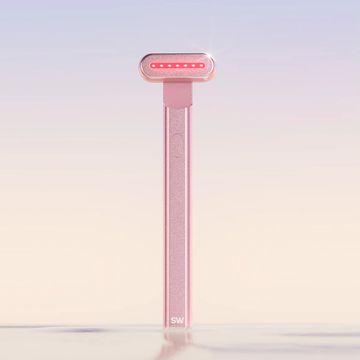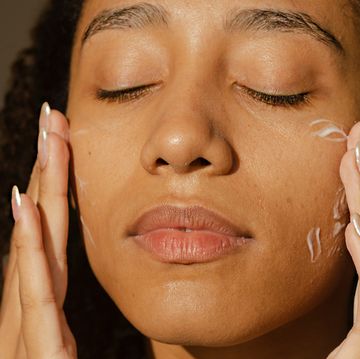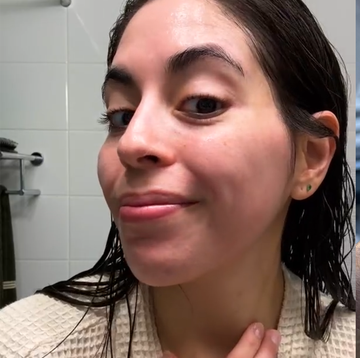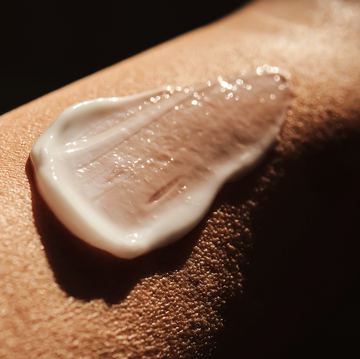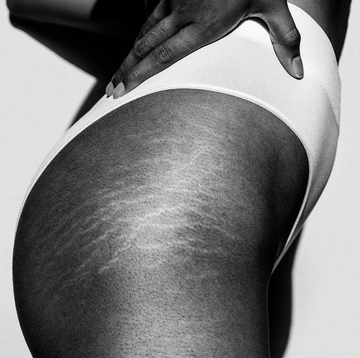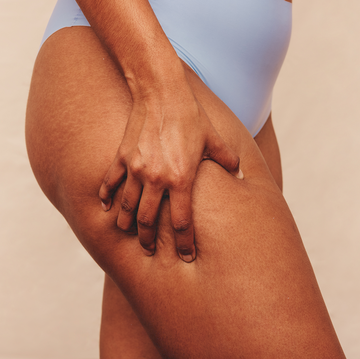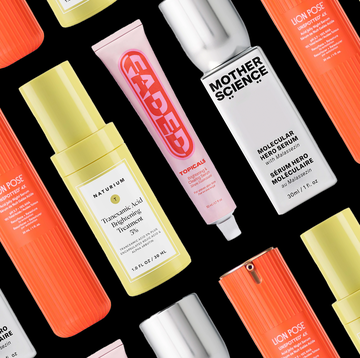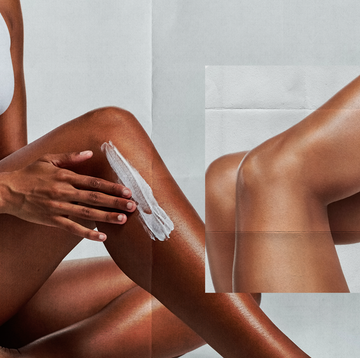What do Hailey Bieber, Ana de Armas, Paris Hilton, and Sabrina Carpenter have in common besides being very famous and very gorgeous celebs? They're all obsessed with the Lyma laser, an at-home device that uses low-level laser therapy (LLLT) to help smooth fine lines, fade acne scars, and firm your skin. In fact, it's the first FDA-cleared laser for at-home use, and it's supposedly 100 times stronger than the LED masks you've probably used at home. As someone who's obsessed with at-home skincare tools and devices, I was eager to try the Lyma laser on my own acne-prone, constantly inflamed skin.
But there are a few caveats to keep in mind. For one, the Lyma laser is very expensive (like $2,695 expensive), and secondly its not necessarily a low-maintenance, minimal time-commitment tool. Which is why I definitely wanted to get some info straight from dermatologist Michelle Henry, MD, to see if device was right for my skin before incorporating it into my routine, as well as her thoughts on if the Lyma laser actually works. And to make sure I was getting the most out of my Lyma laser, I chatted with esthetician Joanna Czech for her advice on using the Lyma, plus how she incorporates it into the treatment room with her clients.
But I didn't stop there. (I have a stellium in Virgo! I get carried away!) I also popped into The Well, my favorite spa in New York, for their new Signature Facial, which incorporates the Lyma laser to help bring down inflammation and contour your skin. Then, with all this knowledge in tow, I got a sample of my very own Lyma laser to try at home to give you my honest review. Keep scrolling for so much info on the Lyma laser, as well as how to use it, my tips and tricks, and my final verdict on if it's worth $2,695 price tag.
What does the Lyma laser do?
The Lyma laser is an at-home device that uses low-level laser therapy (LLLT) to "stimulate collagen production, enhance blood circulation, and facilitate skin healing," says Dr. Henry. LLLT is entirely non-invasive and non-ablative, so it won't harm the outer layers of your skin, meaning it's safe for all skin tones and types—something not very many lasers can brag about.
Lemme get tech-y real quick: The Lyma laser uses a "unique mechanism to target various layers within the skin, including the deepest layers and underlying fat and muscle tissue, thanks to its 500mW power and 808nm wavelength," says Dr. Henry. This wavelength is able to penetrate your skin and reach deep layers without causing any harm to the surface ones, she notes. The light beam emitted from the Lyma is absorbed by your skin's cells and activates your fibroblasts, which are the cells that are responsible for collagen and elastin production. "Collagen provides structural support, while elastin allows the skin to bounce back after stretching," notes Dr. Henry, which is why they're so essential for smoothing fine lines and wrinkles and plumping up your skin.
The way you glide the Lyma laser over your skin can also potentially help improve blood circulation to increase absorption of oxygen and nutrients in your skin, which altogether helps promote healing and decrease inflammation. And it's even a great tool to help fade hyperpigmentation and scarring, says Czech. "Its photobiomodulation beam is designed to restore cell function in the deeper layers of your skin, which can, over time, help reduce sun spots, acne scars, and hyperpigmentation," she explains.
Does the Lyma laser really work?
In my opinion, yes, the Lyma laser really works to help reduce the redness and inflammation from my hormonal acne. I am very prone to breakouts, especially on my chin (hi stress acne!). All of these hormonal zits are very inflamed and red, which can lead to my face feeling super puffy and hot. Plus, they leave behind deep, dark acne scars that are pretty near impossible to fade with just my topical skincare alone. Enter: My newfound love, the Lyma laser.
How to use the Lyma laser:
To use the Lyma laser, first start with clean, dry skin. I do my treatments in the morning because I like how glowy and snatched it makes my skin look immediately after, but Czech likes doing it at night, so it's fully personal preference. I do most of my morning skincare routine (cleanser, toner, and vitamin-C serum). Then I slather on a product to help the laser move across my skin. The Starter Kit comes with the Lyma Oxygen Mist, as well as the Glide Gel, but you can really use any sort of moisturizing product that has some slip. My facialist at The Well used a facial oil which works really glow to boost your glow and I also like using a hydrating serum like The Beauty Sandwich Secret Sauce.
Then, I just switch on my device by clicking the button at the end one time, and once the light turns on, I start moving it in upward motions starting at my neck and jawline. Don't worry—it doesn't hurt or really feel like anything. I find it to be actually really relaxing. I spend about 15 to 20 minutes going over my entire face, paying the most attention to my chin and jawline where I break out. It's shockingly simple. "I often refer to it as 'Netflix-friendly' because it's so convenient to use at home," says Czech.
Wanna try Lyma without dropping mad $$$? Book a facial at The Well.
Lyma laser results:
Immediately after a treatment my skin looks extremely glowy and lifted. TBH, ever since I started using it, I've been getting compliments on my skin constantly. Someone even asked what foundation I was wearing one day that I had nothing on, because my skin looked so damn radiant and even.
But in order to see results like a reduction in fine lines and wrinkles and overall brighter skin tone, I'll definitely need to keep using the laser for beyond a few weeks. "I always set realistic expectations for my clients when it comes to the Lyma laser," says Czech. "I let them know that they can start seeing noticeable results—like improved skin elasticity, a more even skin tone, and smoothed fine lines—after about three months of consistent daily use," Czech notes. Be patient, Lyma founder Lucy Goff notes. "This is rejuvenation happening at a cellular level, so it does require some time because you cannot see that with the naked eye," she says.
Can you overuse the Lyma laser?
Nope, you can't overuse the Lyma laser. You can (and should) use the laser up to once a day for at least 15 minutes (or three minutes per treatment area on your face) for the first 12 weeks. Then, Lyma recommends cutting your treatments to three times a week to maintain results. But because the laser doesn't harm the outer layer of your skin, you're not at risk for any potential irritation or redness. Quite the contrary, actually, the laser is great at bringing down inflammation and puffiness, IMO.
One of the few cons I noticed with the Lyma laser is that it is a bit of a time commitment. This isn't a tool you can use for a couple of minutes here and there and see meaningful results—you have to use it for a full 15 minutes, at least, every single day for 12 weeks. But Czech suggests bringing it "on a plane, relaxing on your couch while watching TV, or even when consumed in a good book" since it's so portable. "It's a fantastic way to invest in your skin without disrupting your busy schedule, so I often recommend the Lyma laser to clients who lead busy lives because it's not as time-consuming as it may initially seem," she says.
Does Lyma Laser work on wrinkles?
Yes, the Lyma laser works on wrinkles, because it can help tighten and firm your skin over time. The laser signals skin cells to produce more collagen and elastin, which essentially makes your skin thicker and more resilient, fending off fine lines and wrinkles from forming and smoothing out the ones you already have.
I am only 26 and have fantastic genetics (and a lineup of very-good anti-aging serums), so I don't have very many wrinkles and am not solely focused on preventing them at the moment. But (!) I always make sure to pay some attention to my under eyes, 11s, and nasolabial folds with my Lyma device to help build as much collagen in those areas as possible to keep wrinkles from forming and stave off Botox injections for as long as humanly possible.
Why is Lyma so expensive?
The Lyma laser is so expensive (see: $2,695) because it's one of the only devices on the market with this level of LLLT power. Plus, you're also getting two skincare products in the Starter Kit—the Oxygen Mist and Glide Serum—which also retails for $150 on their own.
What's the difference between Lyma laser and red light therapy?
The difference between the Lyma laser and traditional red-light therapy is that the Lyma "activates the cellular rejuvenation process deeper within the skin," says Czech. Essentially, "when LED reaches a dense surface like the skin, it bounces off the surface," says Goff, which is why you'll see LED devices glow on your skin. The light just bounces off in all directions so it's a bit less effective. On the other hand, LLLT penetrates your skin past the fat and muscle tissue, which makes the device significantly more powerful. "It's able to actually change your skin's behavioral aging processes at a cellular level, while LEDs might just give you a temporary, superficial glow," says Goff.
Czech still incorporates LED therapy into your facials (she loves the Celluma, but Cosmo deputy beauty director Lauren Balsamo has me wanting to try the TheraFace Mask), but they have very different functions in the treatment room.
Should I do Lyma laser or an in-office laser?
The Lyma laser shouldn't replace in-office laser treatments, says Dr. Henry. In-office lasers typically use much higher energy levels, which is why you usually see more intense results (as well as experience downtime, redness, and pain, unlike the Lyma device). Plus, they can be tailored and cocktailed with other treatments based on your skin's needs. Meanwhile, the Lyma laser is pretty much a one-and-done, unless you combine it with other at-home modalities like microcurrent or high-frequency wands.
Also, the Lyma laser is considered a "cold laser." Unlike skin-rejuvenation lasers that use heat to damage layers of your skin and kickstart its regenerative processes, the Lyma laser uses a complex lens system to diffuse the light it's emitting up to 25,000 (!) times to remove the heat. "The precise engineering of the device, including its lens system, ensures that the laser's energy is evenly diffused and directed deep into the skin, fat, and muscle tissue," explains Dr. Henry. This lack of heat is the reason there's no downtime, pain, or irritation, making it a great option to use daily at home without the supervision of a clinician.
So whether you should do one or the other isn't necessarily the question, because ideally, they would work in tandem. FWIW, I get in-office treatments (I swear by Aviclear and RF microneedling, like Morpheus8) a few times a year, and then keep up my results with skincare products, prescription treatments, and at-home devices like Lyma. What can I say, my face is high maintenance.
Final thoughts:
The Lyma laser is definitely a device I'm excited to keep using and seeing results from. It's such a lovely self-care moment in my day to massage my face with while I sip my morning coffee and scroll through emails. And the snatched glow I get afterward? Dreamy as hell. But I'd be remiss if I didn't bring up the astronomical price, which means this device definitely won't be in many people's budgets.
But keep in mind: "While the Lyma laser is convenient to use at home and can help in fading hyperpigmentation, producing collagen, and reducing fine lines and wrinkles, you have to manage your expectations," says Dr. Henry. Talk to your dermatologist before investing in the device, as an in-office treatment might yield similar results with a potentially lower price tag. In all, though, if you've got the cash, consider this my full endorsement.
Meet the experts:
- Michelle Henry, MD, is a board-certified dermatologist based in New York, NY. She's the founder of Skin and Aesthetic Surgery of Manhattan where she is an expert in all things acne and anti-aging.
- Joanna Czech is a celebrity esthetician based with her own skin studios in New York, NY and Dallas, TX. She's known for working with A-list clientele, including Kim Kardashian and Jennifer Aniston.
- Lucy Goff is the founder of Lyma, a skincare brand focused on skin health from the inside out, after working in public relations and journalism. She's based in London, England.
Why trust Cosmopolitan?
Beth Gillette is the beauty editor at Cosmopolitan with five years of experience researching, writing, and editing skincare stories like reviewing EmSculpt Neo, pore vacuums, and at-home microdermabrasion devices. She tested out the Lyma laser herself after getting a facial at The Well in New York City that incorporated the device and chatting with dermatologists and estheticians all about it.
Beth Gillette is the beauty editor at Cosmopolitan, where she covers skincare, makeup, hair, nails, and more across digital and print. She can generally be found in bright eyeshadow furiously typing her latest feature or hemming and hawing about a new product you "have to try." Prior to Cosmopolitan, she wrote and edited beauty content as an Editor at The Everygirl for four years. Follow her on Instagram for makeup selfies and a new hair 'do every few months.


